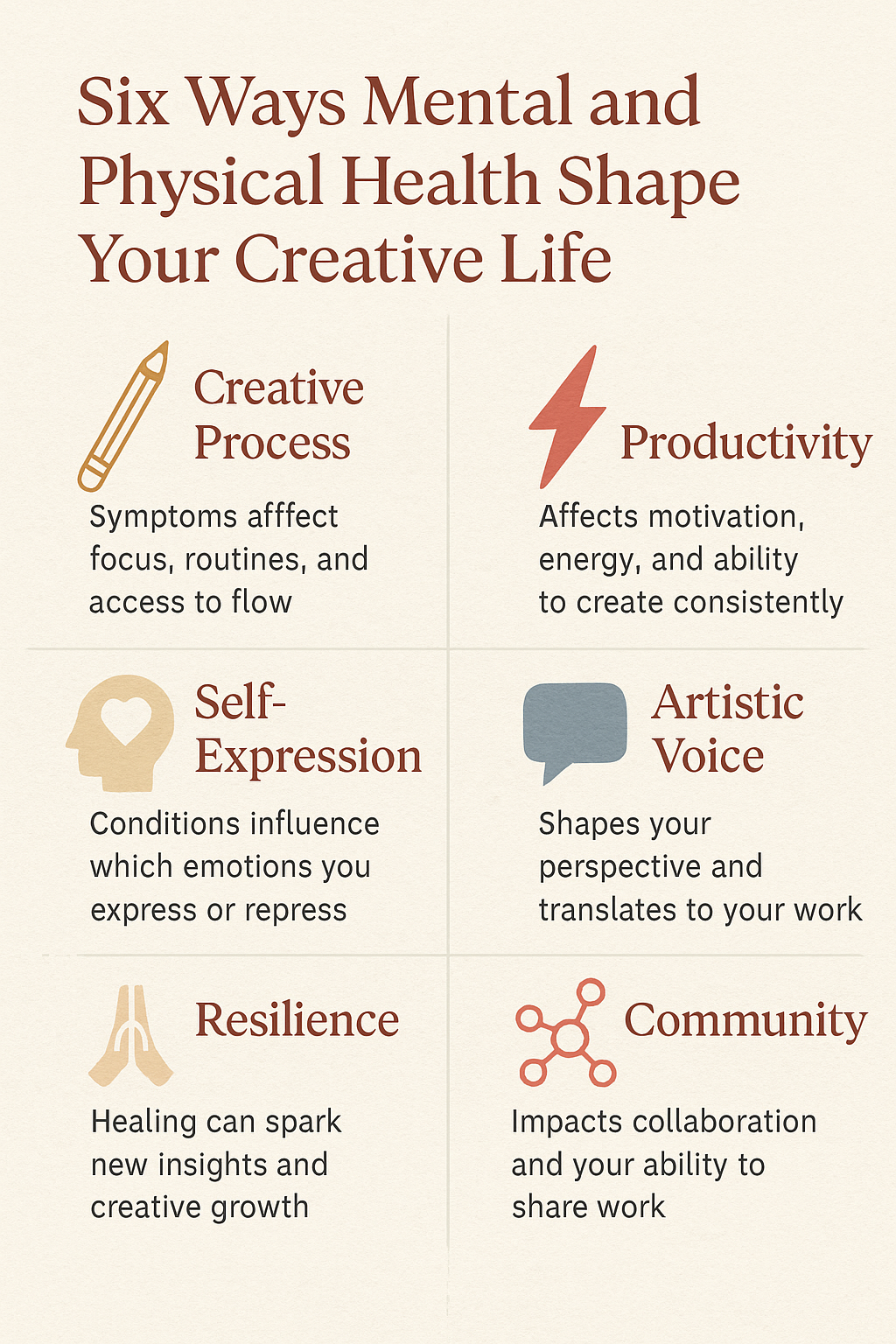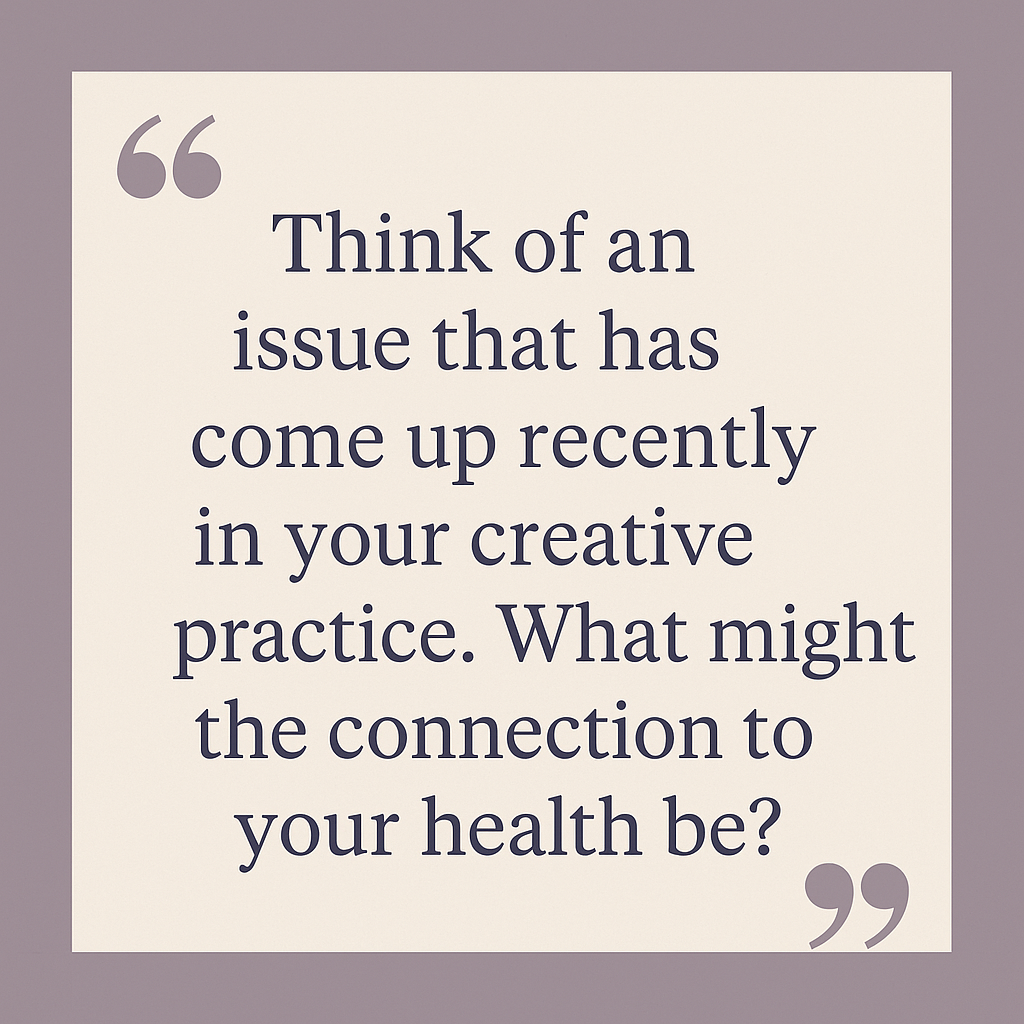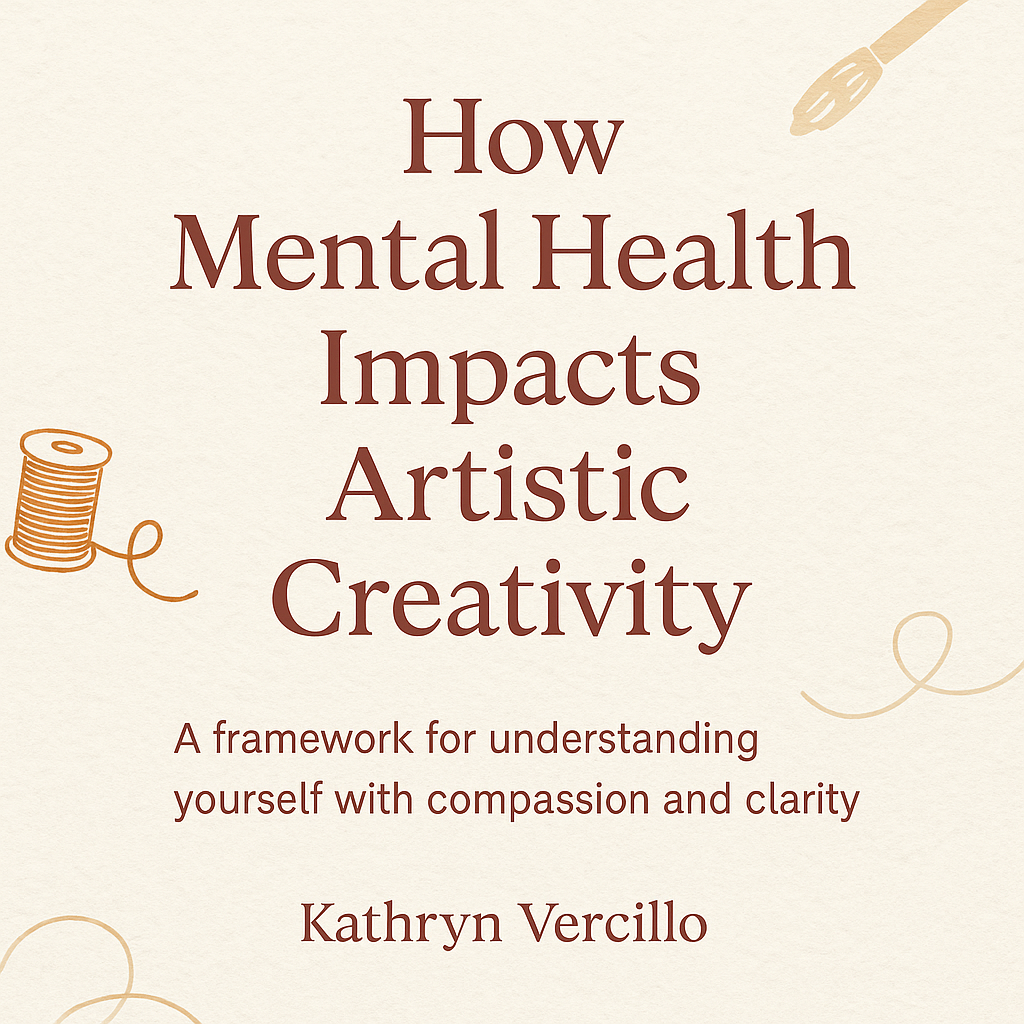Creative wellness strategies for artists, writers, and makers navigating mental or physical challenges
If your creativity has felt distant lately, there may be more happening beneath the surface than just a block. You might be navigating invisible pressures that come from living with anxiety, depression, chronic illness, ADHD, or trauma. You might be trying to create inside a body or brain that is tired, foggy, overwhelmed, or in recovery. And you might be blaming yourself for struggling, even though your creative process is doing its best to keep up with everything you’re carrying.
I know this pattern deeply, both in my own life and in the lives of the artists and makers I work with. I am a full-time writer-artist with a background in psychology and years of experience living with a mental health condition that has shaped every part of how, when, and why I create. I have also spent more than a decade exploring the role of craft, creativity, and expressive arts as tools for self-awareness and resilience. If you are feeling disconnected from your art, your process, or your identity as a creative person, this post is for you.
This is not just about understanding the problem. It is about offering you a gentler path forward.
Why It Feels Harder to Create When Your Health Is Impacted
We often treat creativity like something that should always be accessible. If you are a creative person, the assumption is that your ideas should keep coming and your hands should keep making. But creativity is not separate from your nervous system. It is not separate from your pain levels or your thought patterns. When your health shifts, your creativity shifts with it.
The change might show up in your focus, in your ability to start or finish things, in your energy, or in the way you relate to your own voice. You might avoid the work entirely. You might overwork in a burst of pressure, then crash. You might find yourself cycling through self-criticism because you cannot keep up with the pace you used to hold.
This does not mean you are failing. It means you are operating in a different creative environment than before. The conditions have changed. Your process may need to change with them.
Six Areas Where Creativity and Health Intersect

Here are six creative wellness factors I often explore with clients during one-on-one sessions. Each offers insight into how your body, mind, and circumstances shape your work. None of these are flaws. They are simply entry points for curiosity.
1. Creative Process
Your rituals, flow state, and pacing can all shift depending on what you are experiencing internally. You might find that your usual routines no longer work when you are managing brain fog or anxiety. Instead of pushing harder, it can help to experiment with a slower, more sensory approach. I often return to crochet or gentle writing prompts when my usual mediums feel inaccessible. These alternate forms allow me to stay connected without demanding the kind of cognitive load that writing a full essay might require.
2. Productivity Expectations
Many artists internalize the idea that their value is tied to their output. When mental or physical health affects consistency, it is common to feel shame or doubt. But productivity in a creative life is not the same as it is in a corporate model. Creative cycles are nonlinear. Some seasons are for making. Others are for resting, observing, or healing. Recognizing your own rhythm allows you to stop fighting what is actually happening.
3. Creative Medium
Health conditions can change how accessible a medium is. If you have chronic pain, visual overload, or limited stamina, it might be time to explore forms that offer more physical ease or emotional containment. That does not mean giving up your art form. It means expanding your toolbox. During a particularly hard season, I transitioned temporarily from structured blogging to fiber arts and freeform collage. The work I made during that time saved me from total creative disconnection.
4. Emotional Expression
When you are living through intense emotional states, your creative work may shift to reflect that. Sometimes this opens up powerful channels of truth. Sometimes it becomes too raw to access safely. I often guide clients through expressive writing or image-based storytelling as a way to move into deeper emotional waters without feeling overwhelmed. The goal is not to force healing, but to make space for expression when and how it wants to emerge.
5. Creative Identity
It is incredibly common to question whether you are still an artist when your practice has slowed or changed. I often remind people that identity is not defined by productivity. You are still a writer, even if you have not written this month. You are still an artist, even if your hands have been still. One of the most powerful tools I recommend is what I call a “brag book,” a small personal record of moments, words, works, and memories that remind you who you are. This is not about ego. It is about anchoring yourself in your own creative truth.
6. Creative Sustainability
If you rely on your creative work as part of your livelihood, the pressure to perform can become even more intense. When health limits your capacity, you may need to reimagine your systems. That could look like spacing out client work, shifting to asynchronous support, or redefining your success metrics. In my one-on-one sessions, I work with people to gently restructure their creative businesses so they can protect their energy without sacrificing their passion.

Where to Begin When You Feel Disconnected
The most helpful first step is to stop judging yourself. If your creative life feels out of sync, that is not a sign of weakness. It is a sign that something in your internal or external world needs attention.
Ask yourself this:
What is one challenge I have experienced recently in my creative life? What might the connection be to my health?
That question is often the beginning of a real shift. From there, you can start making aligned decisions instead of reactive ones. You can begin creating a new kind of relationship with your art—one that is compassionate, responsive, and built for the life you are actually living.
Want Support? Let’s Explore This Together
If this post resonated with you, you are not alone. I offer 1:1 Creativity and Wellness Sessions for artists, writers, and makers who want a grounded, nonjudgmental space to explore the intersection of health and creativity. These sessions are part conversation, part reflection, and part gentle strategy. We work with who you are, what you are carrying, and what kind of creative life feels sustainable and meaningful for you now.
Book your session here
You do not have to figure it all out alone. Your creativity is still here. It may just need a different kind of care right now.

Leave a Reply